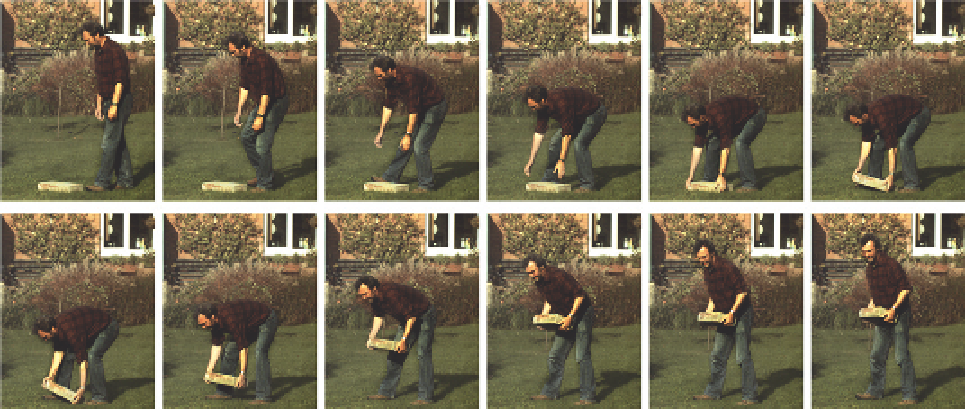Graphics Reference
In-Depth Information
As the child becomes more confident, he uses his arms less and less to
maintain balance. The action of the arms begins to synchronize with the
action of the legs similarly to what occurs in an adult action.
Lifting
Lifting actions vary a great deal, depending on the object being lifted and
the individual or groups involved in the lifting. The required effort and the
techniques used for lifting are so varied that it would be difficult to cover all
the possible permutations. Even with very similar actions the variations are
likely to be considerable. Lifting a cup of coffee for an able-bodied adult is a
very different prospect from that of a small child lifting a cup of milk. In very
general terms, lifting heavy weights may demand rather more effort than
lifting light weights. However, the nature of the object may also have a major
impact on the nature of the lift. Very large though rather light objects may
require a very distinctive action. Fragile or very delicate objects may also
require a different technique. To lift certain objects, it may be necessary for
the action to be undertaken by two or more people. In such cases the effort is
shared and the actions of the individuals synchronized to affect a lift.
These lifting actions may vary, but they can share distinct phases in the overall
dynamic which, if studied, may prove useful for analysis. These phases are
more distinct in the lifting actions that entail heavy or awkward weights that
require a shifting dynamic throughout the action. The difference in the phases
during the lifting of smaller and lighter objects may be far less distinct and
give the appearance of a single-phase action.
Lifting a Heavy Weight
In this example we can see the actions of individuals lifting a heavy weight
from the ground. The actions are so extreme that it is easy to identify the
separate phases within the actions.
FIG 5.63
Sequence of lifting a heavy
weight from the ground.
(a)


